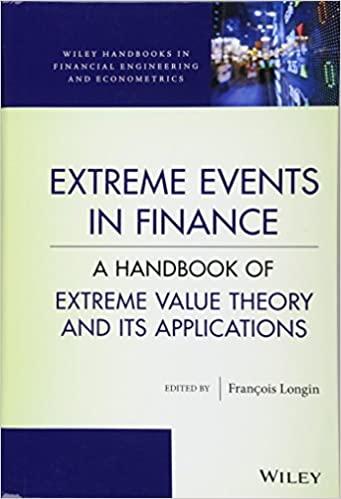A(n) 10%, 25-year bond has a par value of $1,000 and a call price of $1,050. (The bond's first call date is in 5 years.)
A(n) 10%, 25-year bond has a par value of $1,000 and a call price of $1,050. (The bond's first call date is in 5 years.) Coupon payments are made semiannually (so use semiannual compounding where appropriate).
a. Find the current yield, YTM, and YTC on this issue, given that it is currently being priced in the market at $1,175. Which of these 3 yields is the highest? Which is the lowest? Which yield would you use to value this bond? Explain.
b. Repeat the 3 calculations above, given that the bond is being priced at $825. Now which yield is the highest? Which is the lowest? Which yield would you use to value this bond? Explain.
QUESTIONS: *thumbs up for correct answer*
a. If the bond is priced at $1,175, the current yield is (blank)% ?
The annual yield-to-maturity with semiannual compounding is (blank)% ?
The annual yield-to-call with semiannual compounding is (blank) % ?
(Blank) yield is the highest, while (blank) yield is the lowest *current yield, yield to call, or yield to maturity*
Which yield would you use to value this bond?(mult choice)
A.It doesn't matter which yield you use.
B.The yield-to-call because convention is to use the lower more conservative measure of yield.
C.The yield-to-maturity is always used.
D.The yield-to-maturity because the bonds may not be called.
b. If the bond is priced at $825 the current yield is (blank) % ?
The annual yield-to-maturity with semiannual compounding is (blank) % ?
The annual yield-to-call with semiannual compounding is (blank) % ?
(Blank) yield is the highest, while (blank) yield is the lowest *current yield, yield to call, or yield to maturity*
Which yield would you use to value this bond?(Select the best answer below.)
A.The yield-to-maturity because convention is to use the lower of yield-to-maturity or yield-to-call for bonds selling at a discount.
B.The yield-to-maturity because the bonds may not be called.
C.The yield-to-maturity is always used.
D.It doesn't matter which yield you use.
Step by Step Solution
There are 3 Steps involved in it
Step: 1

See step-by-step solutions with expert insights and AI powered tools for academic success
Step: 2

Step: 3

Ace Your Homework with AI
Get the answers you need in no time with our AI-driven, step-by-step assistance
Get Started


